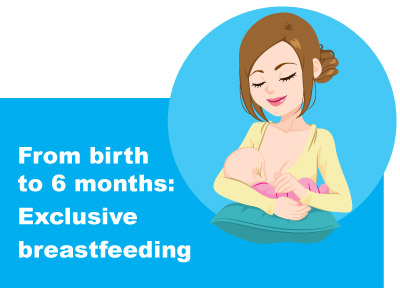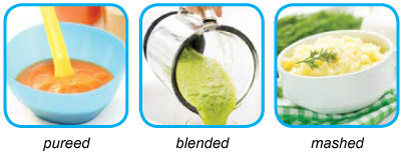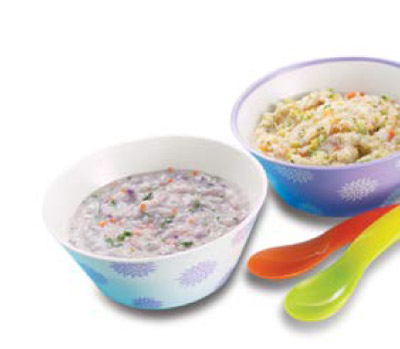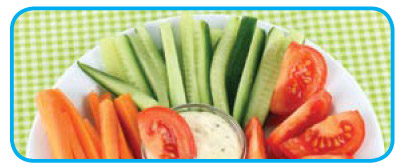Did you know?
Research shows that constantly exposing children to a wide variety of flavours and textures is important. Many babies/toddlers will accept foods after being exposed to it several times. They are also more likely to eat foods that they see their peers and parents are eating. If your child refuses to eat what you have prepared, don’t be discouraged! You may need to offer it as many as eight times over a period of time before he accepts it.
From 6-8 months: Start complementary feeding but continue breastfeeding
Start with cereals such as porridge, tubers such as potato and sweet potato, followed by vegetable and then fruits.
- Introduce one type of food at a time (do not mix different foods together).
- Do this over a 3-7 day period (allow him to get used to the food. It also allows you to see if there are any allergic reactions).
- Repeat (1) with another type of food.
Foods to try:
- Cereals (e.g. porridge, rice)
- Tubers (e.g. sweet potatoes, potatoes)
- Spinach
- Broccoli
- Dhal
- Carrots
Texture: smooth and lump-free
In addition to breastfeeding him, provide him with two to three complementary meals a day during main meals which are breakfast, lunch and dinner. Do ensure that you include foods from all food groups (cereals, tuber, vegetables, fruits, chicken or red meat and fish or eggs), with the appropriate food texture and method of preparation.
From 9-11 months: continue breastfeeding but increase his complementary food intake
- Mix foods that he is initially allergic to, e.g. protein foods (such as fish, eggs, chicken).
- Ensure that his meals follow the principle of balance, moderation, and variety (BMV).
BMV is:
- A Balanced diet (includes foods from all five food groups in the Malaysian Food Pyramid),
- Served in Moderate portions (according to the recommended number of servings per food group),
- Consists of a Variety of foods that will meet all his nutritional needs.
Foods to try:
- Meat porridge with corn and spinach
- Chicken porridge with carrots
- Kembong fish porridge with potatoes and carrots
Texture: minced, diced, or finely chopped soft foods
In addition to breastfeeding him, provide him with three to four meals a day and one or two nutritious snacks between meals.
From 1-2 years
- Feed him bite-sized pieces or small cubes/ chunks of soft foods.
- Continue following the principles of BMV.
Caution: While he can basically eat any food you and the rest of your family eat, care must be taken to ensure that his food is served in smaller chunks/sizes, not spicy or too flavourful like curry.
Foods to try:
- Meat/Fish (cooked until soft and tender)
- Carrot sticks (cooked until soft and tender)
- Potato pancakes (add baby’s favourite meat/fish)
Texture: small cuts/chunks, roughly diced/ chopped, soft foods
In addition to breastfeeding him, provide him two to three complementary meals in a day during main meals (breakfast, lunch and dinner) and also one or two snack in between meals.
Nutritious snacks
*Important! Feed your baby/toddler (1-3 years old) with a nutritious snack that is appropriate, e.g. sandwiches for toddlers 1 year and above. For beverages, plain water is best. Avoid store-bought fruit juices and make your own freshly squeezed fruit juices without any sugar added.
An educational collaboration with Nutrition Society of Malaysia.














Comments